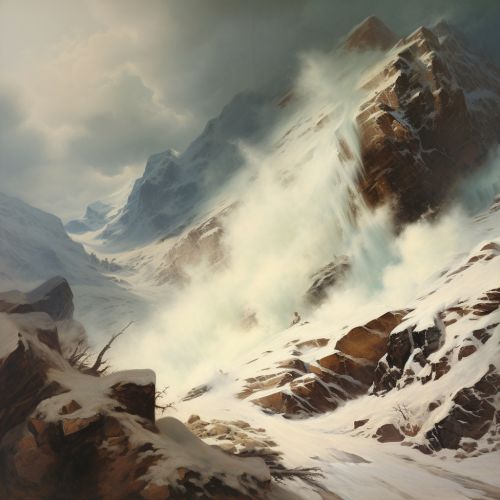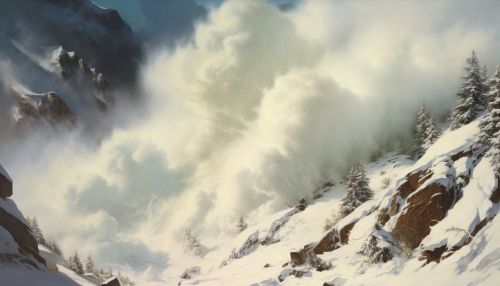Avalanche
Introduction
An avalanche is a rapid flow of snow down a hill or mountainside. Although avalanches can occur on any slope given the right conditions, certain times of the year and certain locations are naturally more dangerous than others. An avalanche can mix air and water with the descending snow. Powerful avalanches have the capability to entrain ice, rocks, trees, and other material on the slope, and can scour their paths down to bedrock.
Types of Avalanches
There are three main types of avalanches: slab, loose snow, and wet snow avalanches.
Slab Avalanches
Slab avalanches are the most deadly type of avalanche. They occur when a cohesive plate of snow slides down the mountain. The slab that breaks away can range from a few centimeters to several meters thick. This type of avalanche is particularly dangerous because it can carry a lot of snow and travel a long distance.
Loose Snow Avalanches
Loose snow avalanches start at a single point and then fan out as they descend the slope. They are usually triggered by a heavy load, such as a skier, on a weak layer of snow. These avalanches are less deadly than slab avalanches, but they can still be dangerous, especially if they carry a person into a terrain trap, such as a gully or a tree well.
Wet Snow Avalanches
Wet snow avalanches occur when the snowpack becomes saturated with water, which can happen during a warm spell or a rain-on-snow event. These avalanches move slowly, but they can cause a lot of damage because of their weight.


Causes of Avalanches
Avalanches are caused by a combination of slope angle, snow cover, weather, temperature, and human or animal triggers.
Slope Angle
The slope angle is one of the most important factors in avalanche formation. Avalanches usually occur on slopes that are between 30 and 45 degrees.
Snow Cover
The characteristics of the snow cover can also influence the likelihood of an avalanche. A weak layer of snow underneath a heavier, cohesive layer can lead to a slab avalanche.
Weather
Weather plays a significant role in avalanche formation. Heavy snowfall, wind, and rapid temperature changes can all increase the risk of an avalanche.
Temperature
Temperature affects the stability of the snowpack. A rapid warming can cause the snow to become unstable and trigger an avalanche.
Triggers
Avalanches can be triggered by natural causes, such as snowfall, wind, or warming temperatures, or by human activities, such as skiing, snowboarding, or snowmobiling.
Avalanche Safety
Avalanche safety involves understanding the risk of avalanche, knowing how to avoid triggering an avalanche, and being prepared to survive if caught in an avalanche.
Understanding Avalanche Risk
The first step in avalanche safety is understanding the risk. This involves learning about the factors that cause avalanches, such as slope angle, snow cover, weather, and temperature.
Avoiding Avalanches
The best way to avoid triggering an avalanche is to stay off slopes that are at high risk. This involves understanding the terrain and the current snow conditions.
Surviving an Avalanche
If caught in an avalanche, there are several strategies that can increase the chances of survival. These include trying to stay on top of the avalanche, swimming to the side, and creating an air pocket if buried.
